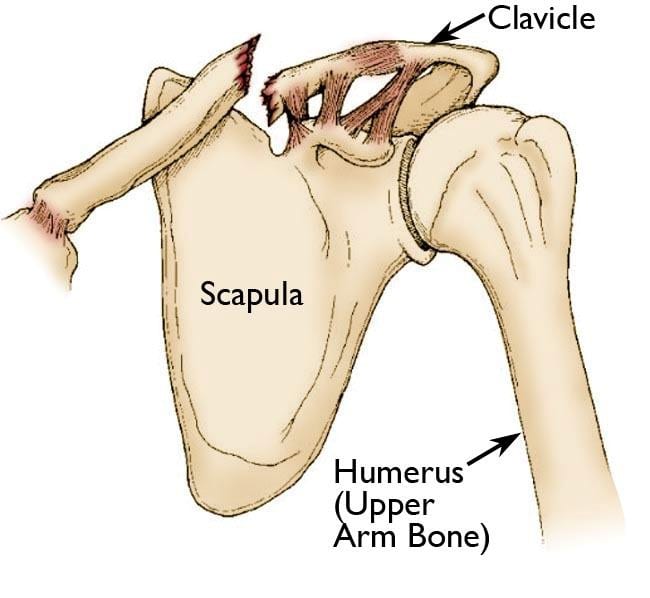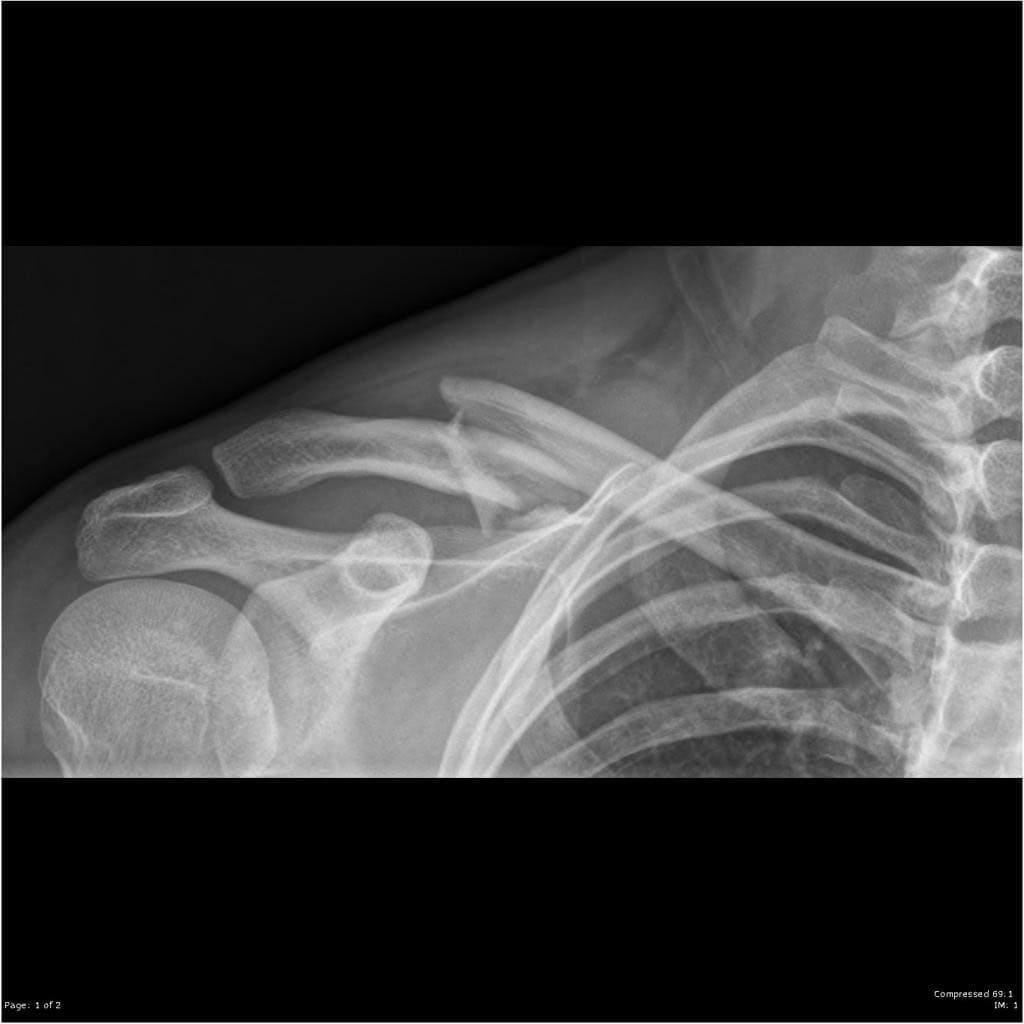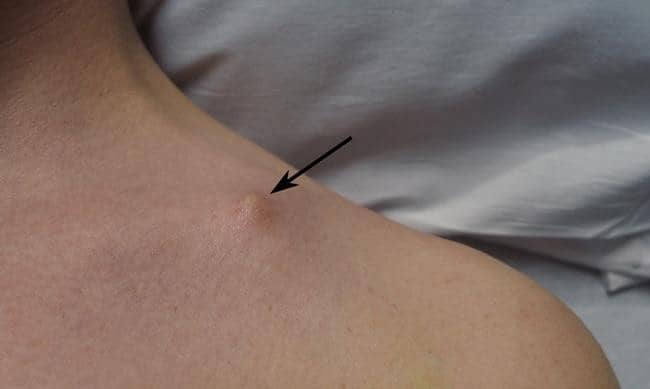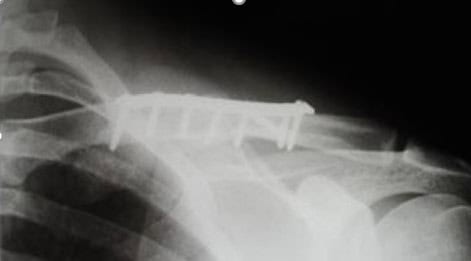What is a clavicle fracture?
It is a fracture at the collarbone, which is connected to the breastbone (sternum) and the shoulder blade (scapula).
The fracture can occur at different areas of the collarbone:

What can cause a clavicle fracture?
Common causes are sports injuries, falls, or traffic accidents. The collarbone is usually broken when there is an impact (such as a fall) on your shoulder or an outstretched arm. Babies can also have clavicle fractures when passing through a birth canal during natural childbirth.
How is a clavicle fracture diagnosed?
A fracture is usually diagnosed through an X-ray of the shoulder. During an X-ray, electromagnetic waves are used to look at the structure of the bones, which can help the doctor determine if it is broken or not. Although the patient is exposed to some radiation, it is very minimal.
The doctor may also test if you have your sense of touch or are able to move your hand to ensure that the nerves and blood vessels near the fracture are not damaged.

What should I do if there is a clavicle fracture?
When your collarbone is fractured, you may be able to observe the following signs

In more severe cases where nearby nerves or blood vessels are also damaged, you may also feel numbness or tingling in your arm on the side of the fracture.
How are clavicle fractures treated?
The fracture is usually treated through non-surgical methods. However, if the broken bone is shifted significantly out of place or the bone is shattered into three or more pieces (comminuted fracture), surgery is usually required to treat it.
Non-surgical methods
The arm will usually be immobilised using a collar and cuff. The duration of immobilisation depends on the severity of the fracture. As the fracture heals, the patient may be able to move his arm lightly.
Physical therapy sessions may also be involved in treatment to help the patient recover mobility in the arm and shoulder through light exercises.
The fracture heals faster in younger children (8 years old and below), and usually takes 4-5 weeks. In teenagers, it may take 6-8 weeks while in adults it may take 10-12 weeks to heal completely. There are usually no limitations in movement once the fracture heals.
Surgical methods
Treatment through surgery may be recommended if the fracture is more complicated such as when the bone shatters into many pieces or a broken end of the bone punctures the skin. If the patient is an athlete and wants to regain shoulder motion more quickly, surgery may also be recommended.

The above image shows an X-ray of a patient with a plate fixation
An incision will be made for the doctor to fix the bones in place to allow healing. Either a plate with screws (plate fixation) or a long pin inserted into the center of the bone (intramedullary fixation) will be used to secure the bones in place. In the case of an intramedullary fixation, the pin needs to be removed through a separate surgery once the fracture has healed.
Surgery allows the injury to recover more quickly and patients can usually resume light activities after a few days in a sling. Physical therapy sessions will also help the patient to recover.
For an assessment of your condition, please book an appointment with Dr. Yong Ren.